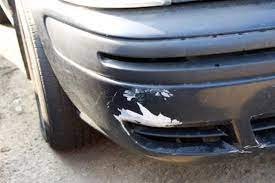
Is It a Good Idea to Paint a Bumper Cover?
Whether you are looking to replace the bumper cover on your car or looking to repaint the bumper cover, you need to make sure that you are buying a bumper cover that is made from good quality materials. If you are not careful, you may end up with a bumper cover that will not last for long.
Repainting a plastic bumper
Table of Contents
Whether you are repainting a plastic bumper cover because it is damaged or simply need a new look for your vehicle, there are some basic steps you can take to get the best results. The process is similar for both plastics and paints, but there are a few factors to keep in mind.
The first step is to thoroughly clean the plastic bumper cover. This is done by using a tack cloth and soapy water. This will remove debris and dust from the bumper cover.
Then, you need to sand the bumper cover to remove the shallow scratches. You can use P2000 or P1500 sandpaper. Sanding the bumper cover in this fashion will result in a smooth finish.
Once the bumper has been sanded, you can begin painting. Use a base coat of color and then repeat the process two or three times. You should allow the first coat to dry for at least 24 hours.
Painting a RRIM panel
Whether you’re repairing a bumper cover or painting a RRIM panel, there are some basic techniques you can follow. These techniques will help you prevent common paint failures.
The first step is to make sure the surface is clean. Using a Torque Detail Full Decon Kit can help you get rid of dirt and grease. Then you can scuff the surface to get the perfect primer surface.
Using the right materials to paint plastic parts is crucial. Plastic parts have lower surface tension than metal and will flow differently. This causes problems when applying paint.
To avoid these problems, you should follow the directions on the packaging. Some bumper cover manufacturers use a water-based primer, while others use a water-thinned lacquer primer. Some of the cheaper lacquer thinners can make the part look black.
The next step is to mix a flex agent into the paint. Using the correct flex agent will help the paint stick better to the bumper cover. This also helps to make the bumper cover less likely to crack.
Painting a flexible sheet-molded compound
Having a bumper cover that is color coded is a great idea, but it is not the same as having a bumper that is color coded. A bumper cover is a type of bumper that is installed before the wheels and before the body is painted. It plays a major role in the appearance of the vehicle. This is why it is important to have a high-quality finish.
A bumper cover that has been properly cleaned and prepared is a surefire way to prevent peeling. To achieve this, a water-based cleaning agent such as AP200 Plastic Adhesion Promoter should be used. This is especially important for flexible plastic parts.
The same goes for cleaning the area surrounding the bumper. These areas tend to be more difficult to clean. Use a water-based cleaning agent to remove any mold-release agents. Once the mold is removed, rinse the area with soap and water.
A good way to do this is to leave the area at room temperature for 15 minutes or so. After the area has warmed, you can re-wet it with water. After rinsing, wipe the area clean. It’s important to remember that paint based on thermoplastic is a greasy material. So be careful not to overheat it.
Sanding off the existing paint
Whether you have a new bumper cover or one that’s been in the shop for a while, sanding off the existing paint on a painted bumper cover can help you get the perfect finish. Sanding the bumper cover helps you repair cracks and scratches and adds a beautiful satin finish.
When sanding off the existing paint on your bumper, there are a few steps you need to take. The first step is to clean the surface with a car wash solution. This will help get rid of any dirt or dust.
Next, you will need to apply a sealer. This will help keep the paint from peeling and fading. You can use Kwik Seal, Hydrobase, or an epoxy primer. Make sure to allow the sealer to dry completely before applying a new coat of paint.
Afterward, you’ll need to remove any sanding residue. You can do this with an air gun or an air sander.